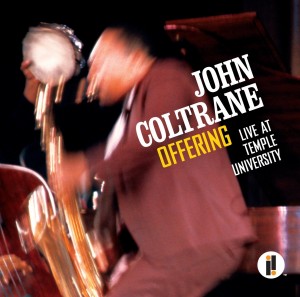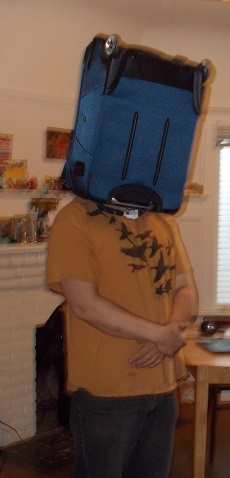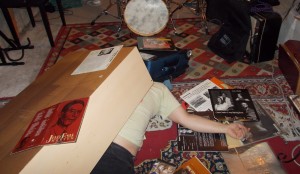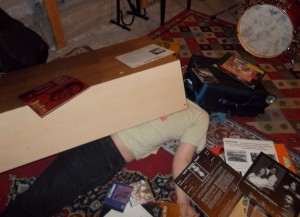On the occasion of Dream Kitchen re-uniting to play at Jupiter in Berkeley on June 28, I sat down for a chat with bandleader, guitarist and vocalist John Schott.
John Schott: You’ve spoken several times in therapy sessions of your anxiety around the interview: your fear of sounding, when talking in therapy, as if you’re giving answers in an interview, as well as your desire to be in the elite group of musicians-who-get-interviewed, and even of Glenn Gould’s cheeky pseudo-psychoanalytical self-interview. Clearly, seeing that you’re writing this, something is manifesting itself here, in regard to that anxiety. Why write this, and why now?
John Schott: Uh… [long pause]…
JS Let’s try a different tack. It’s been quite a while since your last CD release, 2005’s Drunken Songs for Sober Times by your trio Dream Kitchen. What have you been up to?
JS …
JS You seem to have a lot of reservations about this interview exercise!
JS Umm…technology, and social media… increasingly…
JS [Long pause.] Well, I for one thought Drunken Songs was very nearly sublime. Every song seems to have a different focus, to come at the material from a different angle, somewhat like your CD Shuffle Play. Yet the compositions, by Jelly Roll Morton, Ellington, and others, really come thorough. It also impressed me as a kind of a nervy record: this was your first time singing on record, your first time playing acoustic fingerstyle guitar on record, your first slide guitar on record. With musicians you hadn’t previously recorded with, who…
JS [quickly] Ok, now you’re beginning to sound like an apologist! I liked it better when you said it was “very nearly sublime”.
JS You don’t wince at the “nearly”?
JS Oh man… [pause] I gotta go.
JS Sorry. No, wait, I mean it, I really like it, the Dream Kitchen record. Is there anything you can say about it?
JS Mmm…ugh. Hrm. Well…uh, it’s funny all the considerations that go into something like this; some of them only apparent in retrospect. I figured out that the world of Early Jazz was not going to come to me the way the Jazz of the 40s, 50s and 60s did. It was never going to be a part of my playing life unless I made it happen. I had long listened attentively to Armstrong, Morton, and Ellington, but I had never played a song by Morton, never transcribed any Bechet, and I didn’t know the “100 songs you must know from 1900-1929”, the way I know “100 songs you must know from the Post-War era”. Nor did I know “Just A Closer Walk With Me”. So starting around 2001, I just completely immersed myself in it, through the recording of the CD and for about a year after. I listened and listened, and read and read, and searched and collected, and I tried to comprehensively “know” early Jazz, and for that matter Ragtime and Black Minstrelsy. I could talk about this work for hours. At the time I felt very much alone with it. None of my colleagues had ever heard of Lovie Austin, Tiny Parham, Bennie Moten, Johnny Dunn, or Tony Jackson. No one even listened to Bix or King Oliver, let alone ODJB or NORK. But in terms of putting the band together, I didn’t care [if they knew that music]; I just wanted people who could groove and were open to spontaneity. But then there is this whole ‘nother thing. I found it very difficult to keep a rhythm section together. Ches and Devin had moved, Trevor had moved. Amendola was very busy. So many people I had played with had moved away. Even when they were here, they were very busy, in eight different bands. I thought: to hell with it, I’m going to have a band without a bass player, it’ll just be three people (less people to divide the bread with), and I’ll find players who aren’t exactly in “my scene”. We’ll play these funky old Jazz tunes, so it’ll be kinda avant-funky, and lots of hipster guitar playing, so maybe we can get a piece of that action (somewhere around the nexus of Dr. John, Jam bands, and John Zorn?). So these thoughts were about getting gigs, keeping a band together, and making some money. In some respects Dream Kitchen was a conscious attempt to put forward something commercially viable. Strange as it now seems! But there’s a third dimension of generative motivations. Following a string of perceived defeats and emotional lows,the one thing that made sense, the one rock of Gilbraltar for me, was playing I – IV – V music, with an emphasis on the healing power of groove, and playing only what you really “heard”. Keeping it simple, so that you could be honest and vulnerable. For the moment, I absolutely could not go back to the ambitious, complicated music that had pre-occupied me all my adult life. I sensed that John Hanes could help me get where I wanted to go. He immediately impressed me as a musician and as a person. He didn’t think of himself as a Jazz drummer, but he was into improvising with a capital I. And he knew about songs, all kinds of songs. He knew a lot of standards, he knew old songs, old movies, old soul tunes. He had been around the block and back as a working musician, and that also counts for a lot with me.
JS I think you want to say something about why the group folded?
JS That’s weird – yes, yes I do. The big reason was [tuba, bass trombone, and jug player] Marc [Bolin] moved to Los Angeles to go to graduate school, and he simply couldn’t be replaced. I tried, asked around, checked out a couple players, but there’s just no one (that I’m aware of) who has phenomenal technique on tuba and bass trombone, grooves his ass off, and is such a free spirit. I hadn’t realized it at the time, but the Dream Kitchen book was all built around Marc! Once again I was stymied by the vagabond lifestyle of the young musician! Eventually I got around to writing and playing my music, with John and Dan Seamans, at the Actual Café. But I really feel the impact of those years of obsessively listening to early Jazz in my lines, in my improvising, whether I’m playing an original, a standard, or completely free. I’d say at least 80% of my nightly music listening, alone in the garage, is devoted to Louis Armstrong, Charlie Parker, Lester Young and Sonny Rollins. Those four kind of all roll into one four-headed deity to me: PopsBirdPresNewk. I could just listen to those four for the rest of my life. Okay, gotta have women, so add Sheila Jordan and Shirley Horn.
JS Okay, thanks, I think I’ve got enough.
JS Wait, I’m not done!
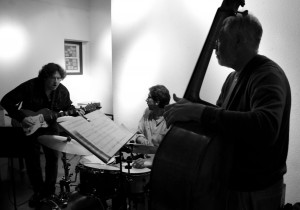 It’s been so long since my last record that just now I had to check whether it was five or six years. So I am thrilled, and more than a little relieved, to have just finished the recording of a record with the trio, the Actual Trio, in fact. We did the entire record in one ten-hour day, at the legendary Fantasy Studios, just fifteen blocks from my house. The project feels exciting and new to me in several respects:
It’s been so long since my last record that just now I had to check whether it was five or six years. So I am thrilled, and more than a little relieved, to have just finished the recording of a record with the trio, the Actual Trio, in fact. We did the entire record in one ten-hour day, at the legendary Fantasy Studios, just fifteen blocks from my house. The project feels exciting and new to me in several respects:
